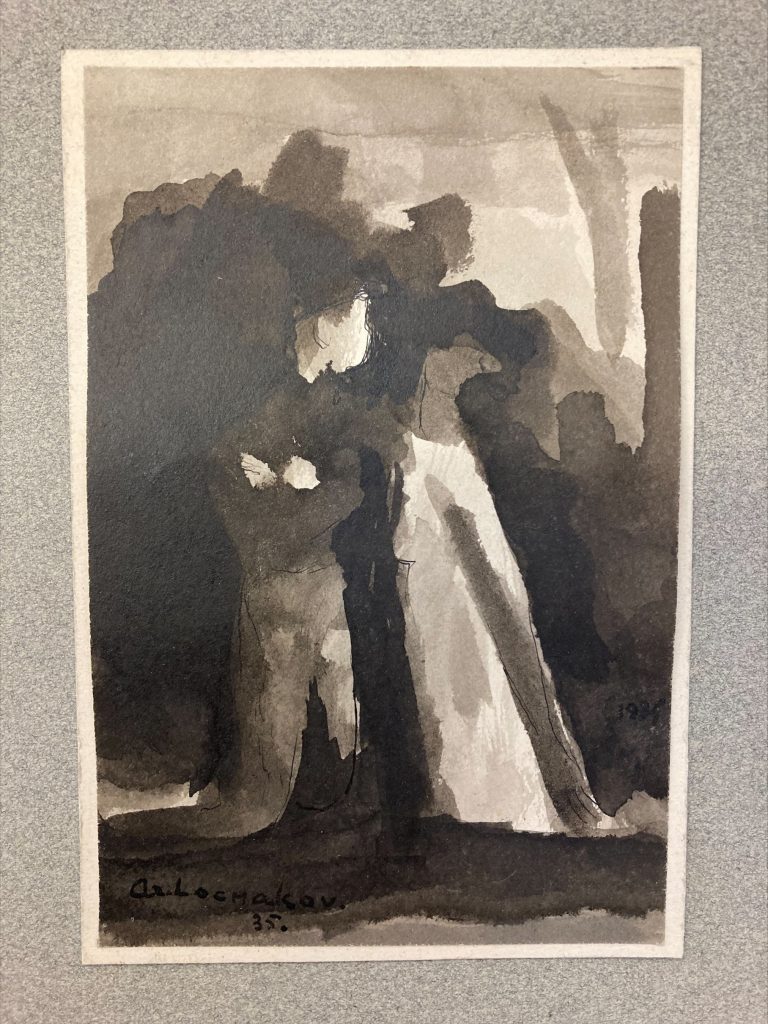Art World
Artworks by a Jewish Artist Are Returned to Paris 80 Years After Going Missing
Why did a trove of nearly 50 lost works by Ary Arcadie Lochakov suddenly turn up in a park in San Francisco?

Why did a trove of nearly 50 lost works by Ary Arcadie Lochakov suddenly turn up in a park in San Francisco?

Jo Lawson-Tancred

A trove of 48 artworks that were discovered in highly mysterious circumstances in 2022 will travel to their new home at the Museum of Jewish Art and History in Paris. Their chance discovery has brought to light the work of the artist Ary Arcadie Lochakov, who died from malnutrition in 1941 after being forced to hide in a Jewish ghetto in Nazi-occupied France.
The paintings, prints, and drawings were found spread out in display on an abandoned on a bench in Crane Cove Park, right by the waterfront in San Francisco. The Port of San Francisco employee, Jermaine Joseph, who stumbled on the artworks immediately alerted two of his colleagues, including special projects analyst Arianna Cunha.
The trio began inspecting the items, noting how they were nicely framed and, in some cases, fixed in place by stones. To their surprise, they also noticed that most were signed and bore a date between 1920 and 1941. This merited saving the artworks when it became clear that nobody was coming to claim them.
Back at the offices, a name was pieced together from the various signatures: Ary Arcadie Lochakov. Cunha launched an amateur art historical investigation online and found a few mentions of one Jewish artist who could be a match, according to a report in the San Francisco Standard. She consulted an international network of museums and specialists with knowledge of Jewish art and spotted an obvious stylistic affinity between the recovered artworks and a series of prints by Lochakov from the collection of the Ghetto Fighters’ House Museum in Israel, which helped authenticate the newly discovered pieces.
As Cunha soon discovered, Lochakov was born in 1892 into a cultured Jewish family from Bessarabia, then part of the former Russian Empire. He had studied painting at the School of Fine Arts in Odessa, a city in modern day Ukraine, before joining the Russian Army during WWI. After this, he moved with his friend, the poet Dovid Knut, to the French capital to become an artist and part-time photographer. Before he was murdered in the Holocaust, he regularly exhibited at important annual exhibitions for avant-garde art like the Salon d’Automne and the Salon des Indépendants.

A watercolor attributed to Ary Arcadie Lochakow that was discovered in San Francisco. Courtesy of the Port of San Francisco.
After Lochakov died on October 5, 1941, all his work was sold at auction. The most perplexing question that Cunha and her colleagues had yet to solve, therefore, was why nearly 50 of his works turned up in San Francisco in 2022.
The only clue to be found was stickers on some of the frames indicating that they had been bought from a store in Huntsville, Alabama. While the artist did not have a family, its possible a friend or associate gathered a large collection of his works after his death and eventually emigrated to the U.S.
Very little was known about Lochakov. The French author Hersh Fenster wrote about Lochakov in his 1951 book Our Martyred Artists. Published in Yiddish with a preface by Marc Chagall, it detailed Jewish members of the School of Paris, which had also included artistic greats like Pablo Picasso, Amedeo Modigliani and Joan Miró, who all came to Paris in the early 20th century.
The inexplicable and unlikely find of so many of his works is significant because only a handful were known to be existence. The portrait of his friend David Knut had been acquired by Paris’s Museum of Jewish Art and History for $27,633 in 2020, a fact that marked out the Paris museum as the obvious location to house Lochakov’s larger oeuvre and promote his legacy.
“He should have lived another 20 years and made a lot more art,” the museum’s curator Pascale Samuel told the San Francisco Standard. “But Nazism and the Holocaust stopped that.”
Earlier this year, the Port of San Francisco resolved to transfer the 48 paintings to the museum, and they will travel there after going on public view in San Francisco. At the Museum of Jewish Art and History and the institution, Lochakov’s practice will be carefully preserved, further researched and repositioned alongside the artist’s forebearers and contemporaries.